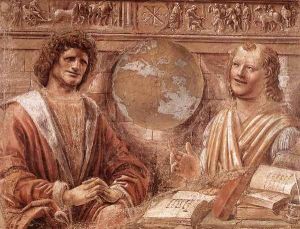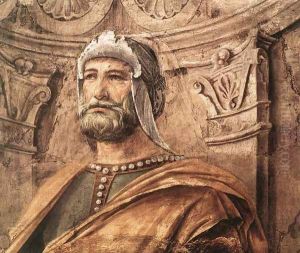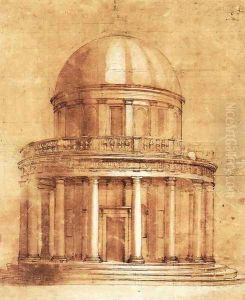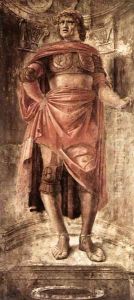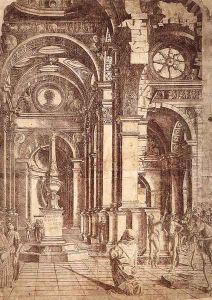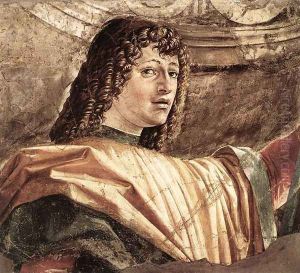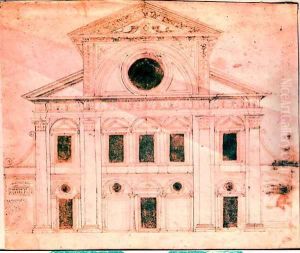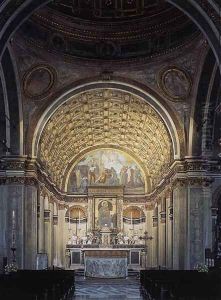Donato Bramante Paintings
Donato Bramante, born in 1444 in Fermignano, Italy, was a prominent architect during the High Renaissance. He was instrumental in developing the High Renaissance architectural style, which was characterized by its symmetry, balance, and harmony. Bramante's initial artistic training was in painting under the guidance of Fra Carnevale in Urbino. This early education provided him with a strong foundation in the principles of perspective and design, which he later applied to architecture.
Bramante moved to Milan in the late 1470s, where he began to focus more on architecture. He gained recognition for his work on the Santa Maria presso San Satiro church, where he ingeniously dealt with spatial limitations to create the illusion of a larger, deeper space using trompe l'oeil. Another significant project in Milan was the Santa Maria delle Grazie convent, for which he designed the cloister and the apse.
In 1499, following the French invasion of Milan, Bramante moved to Rome, where he would make his most enduring contributions to architecture. He became associated with the papal court and was commissioned by Pope Julius II to design what would become one of his masterpieces: the Tempietto at San Pietro in Montorio, which is often cited as the exemplar of High Renaissance architecture. Its harmonious proportions and domed design reflect the influence of ancient Roman architecture, particularly the Pantheon.
Bramante's most ambitious project was the design for the new St. Peter's Basilica in Vatican City. In 1506, he was appointed chief architect of the basilica by Pope Julius II. His plan called for a centrally planned Greek cross structure with a massive dome at the center, drawing inspiration from both the Pantheon and the Florence Cathedral by Filippo Brunelleschi. Although Bramante's design for St. Peter's was not fully realized during his lifetime due to various complexities and his death in 1514, his ideas and foundational work were influential in the later execution of the basilica by architects such as Michelangelo and Carlo Maderno.
Bramante's legacy in architecture is significant, as he helped to establish and propagate the principles of Renaissance architecture. His work is characterized by its clarity, mathematical precision, and the harmonious integration of classical architectural elements with the contemporary aesthetic of his time. Bramante died on March 11, 1514, in Rome, but his impact on architecture and the Renaissance continued to resonate long after his death.
